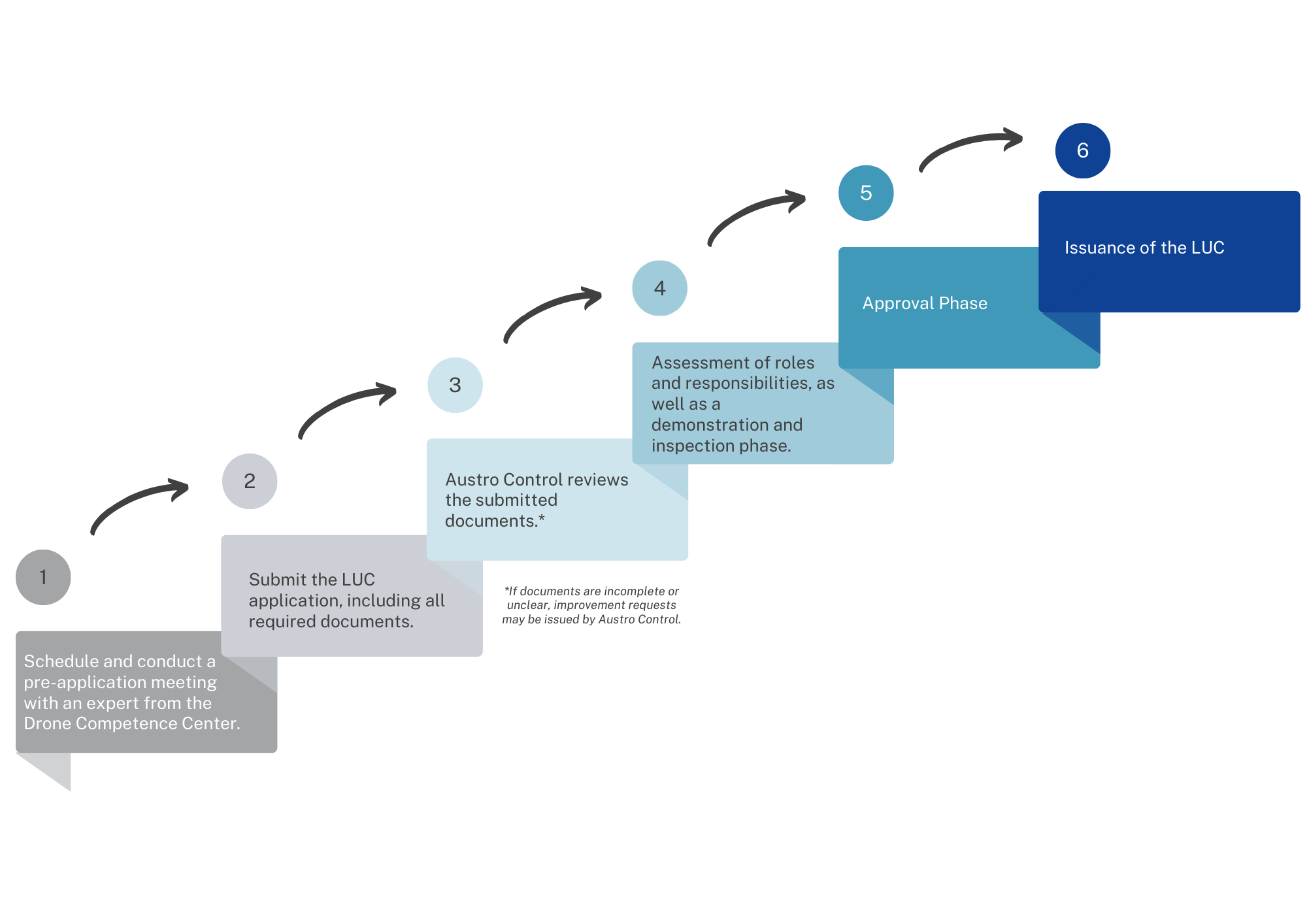The Light UAS Operator Certificate (LUC) is an optional certification for UAS operators, granting its holder various operational privileges. The LUC serves as proof that the operator is capable of independently assessing the risks and complexity of their operations, implementing risk mitigation measures, and ensuring operational safety at all times.
The requirements that UAS operators must meet are outlined in Part C of Commission Implementing Regulation (EU) 2019/947. Following a successful evaluation of compliance with these requirements, an LUC can be issued, and specific privileges may be granted to the operator. These privileges may allow the LUC holder to authorize certain operations without requiring approval from the competent aviation authority.
Before applying for an LUC, the operator must establish, implement, and maintain a Safety Management System (SMS) appropriate to the size of the organization and the nature and complexity of its operations. To achieve safety objectives, the organization must define processes and clearly assign responsibilities.
A significant difference between an LUC and an operational authorization lies in the privileges granted within the LUC framework. The assignment of privileges follows a step-by-step approach, depending on the maturity level of the UAS operator's organization. A fundamental privilege under an LUC includes the ability to conduct UAS operations based on an existing operational authorization. The scope of privileges can be gradually expanded over time.
A significant difference between an LUC and an operational authorization lies in the privileges granted within the LUC framework. The assignment of privileges follows a step-by-step approach, depending on the maturity level of the UAS operator's organization. A fundamental privilege under an LUC includes the ability to conduct UAS operations based on an existing operational authorization. The scope of privileges can be gradually expanded over time.
Before applying for an LUC, we encourage you to contact us at dronespace@austrocontrol.at, so we can provide you with tailored information regarding the application process and requirements.
Important: The LUC holder is only permitted to conduct UAS operations without separate approval if these operations fall within the scope of the privileges defined in the LUC conditions.
The LUC remains valid indefinitely, provided that the organization continues to comply with its requirements. Ongoing compliance is verified internally within the organization and externally through LUC audits conducted by Austro Control. Failure to maintain compliance will result in the revocation of the LUC.


